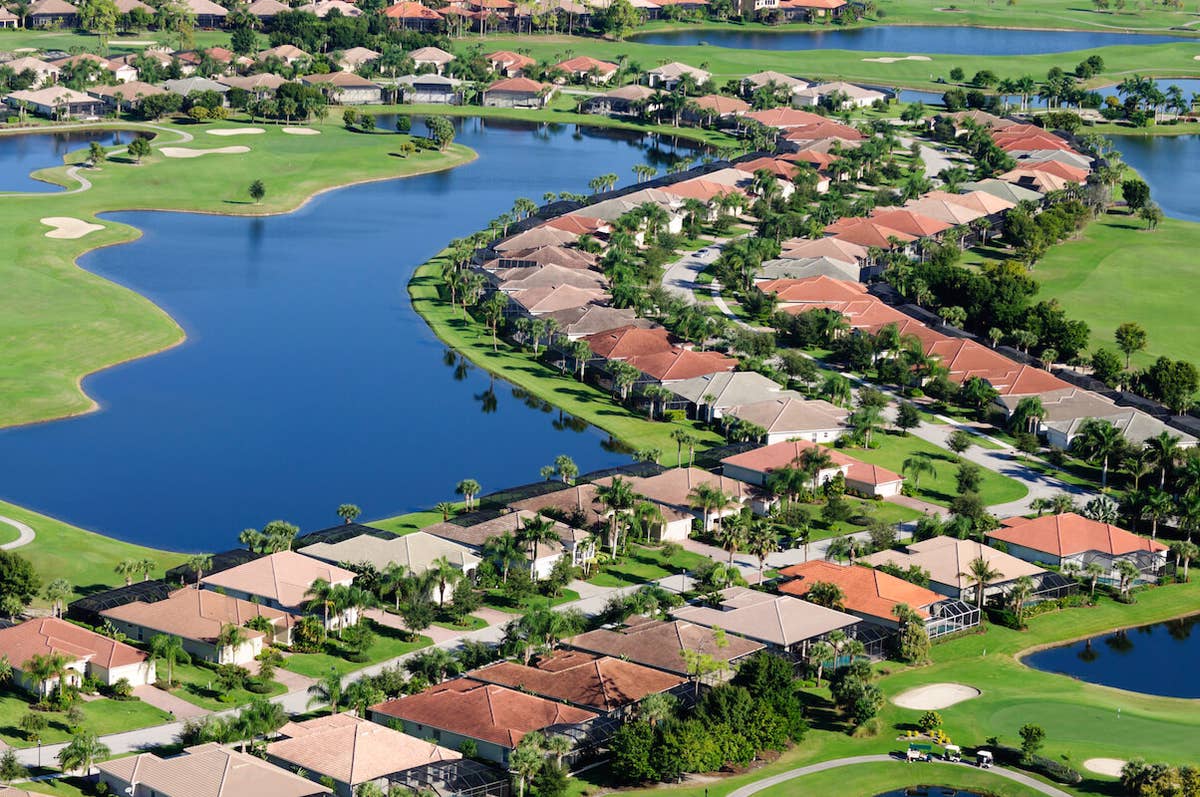Buying a home is a big deal, so people usually have a lot of questions before they make an offer. They worry about affording the mortgage, and wonder if it’s near good schools. They look for a place that’s close to work and has all the rooms and space they need. And they want to know if the house is in good shape or if they’re going to have to get a new roof in a couple of years.
All of these are smart questions to ask when buying a home, but there’s one more factor to consider: climate change. Our changing climate is causing stronger hurricanes, increased flooding, and more extreme temperatures, yet a recent survey showed that 48% of new homeowners don’t think about that before they buy.
Homebuyers ignore climate change despite natural disaster concerns
There appears to be a pretty big disconnect between the concerns homebuyers have and the actions they take when choosing where to live. While nearly half say climate change isn’t a factor in their decisions, the Realtor.com survey also discovered that significant portions do have concerns about natural disasters:
- 39% worry about tornadoes.
- 38%t worry about floods.
- 29% worry about hurricanes.
It’s not just this survey that's sounding an alarm. In an interview with CNBC, Redfin CEO Glenn Kelman claimed homebuyers aren’t taking climate change seriously.
The problem with this, as Kelman pointed out, is that buyers “keep marching into the jaws of destruction,” even if their home insurance doesn’t cover the havoc that ensues. Plus, as more people move into high-risk areas, insurance companies have to cover more frequent and more expensive claims. This drives up premiums, sometimes to the extent that homeowners can’t find the coverage they need.
Where to buy a property with climate change in mind
According to a major report, the climate is changing everywhere, so how can you decide where to buy property? You may want to start by identifying what areas of the country interest you and researching what experts have to say about the impact climate change may have on them.
SafeHome.org compiled data from Climate Central and came up with a Climate Change Rate Index to evaluate states by five major risk categories and their effects: extreme heat, drought, wildfire, coastal flooding, and inland flooding. It found the five states with the lowest Climate Change Rate Index were:
- Vermont (30).
- New Hampshire (63).
- Massachusetts (99).
- Minnesota (104).
- Colorado (106).
And, the states with the highest risk are:
- Florida (308).
- South Carolina (282).
- Louisiana (281).
- North Carolina (276).
- Mississippi (270).
States in the Northeast have the lowest risk, with an average Climate Rate Index of 123, followed by the Midwest (147) and West (166). The South, with an average Climate Change Index of 226, has the greatest risk.
Home insurance for properties with climate risk
Once you have an idea of how climate change may impact the area where you want to buy property, you can identify the specific risks you’re most likely to face and determine if homeowners insurance covers your potential catastrophes.
Let’s look at how home insurance covers some of the more common natural disasters:
- Wind damage, including that from tornadoes, is typically covered. However, if you live in a hurricane-prone area you may have a hurricane deductible on top of your standard deductible. Some insurance companies also add a wind/hail deductible in certain areas.
- Water damage is usually only covered if it’s caused by a sudden, internal accident, like a burst pipe, or occurs because of damage caused by another covered peril. Flooding from storm surges, overflowing rivers and streams, and other external sources almost always require flood insurance. Flood insurance may also be required if you live in a high-risk flood zone.
- Wildfires are being excluded by more and more insurers, so you may find it hard to get home insurance if you’re in a known wildfire zone.
- Snow and ice damage is often covered, but you may see your claim denied if you allow snow or ice to build up, and it causes water to seep into your home.
Areas such as Utah can get both severe winter blizzards and seasonal thunderstorms that produce significant flooding. The Midwest has seen serious flooding in both 2019 and 2020, and large swaths of California, Colorado, Kentucky, Montana, Nebraska, South Dakota, and Texas all saw wildfires in 2021.
When you find a home you want to buy, ask the real estate agent about climate change and natural disasters common in the area. Will rising ocean levels pose a problem to your land? What drainage features exist to prevent flooding with significant rainfall? Do you have to be concerned about hurricane season each year? If so, in what ways?
Is climate change a deal breaker to buying a home?
Knowing the facts about climate change and how it might affect a new property doesn’t have to be a deal breaker. But you do need to be fully aware of the risks you face so you can make an educated decision.
There are many things you can do to reduce the potential effects of climate change disasters on your new home. Arm yourself with the data so that you can research mitigation options for your property. In the end, you may still feel it’s worth the risk to buy a dream home, but at least you’ll be prepared for the worst-case scenario.


